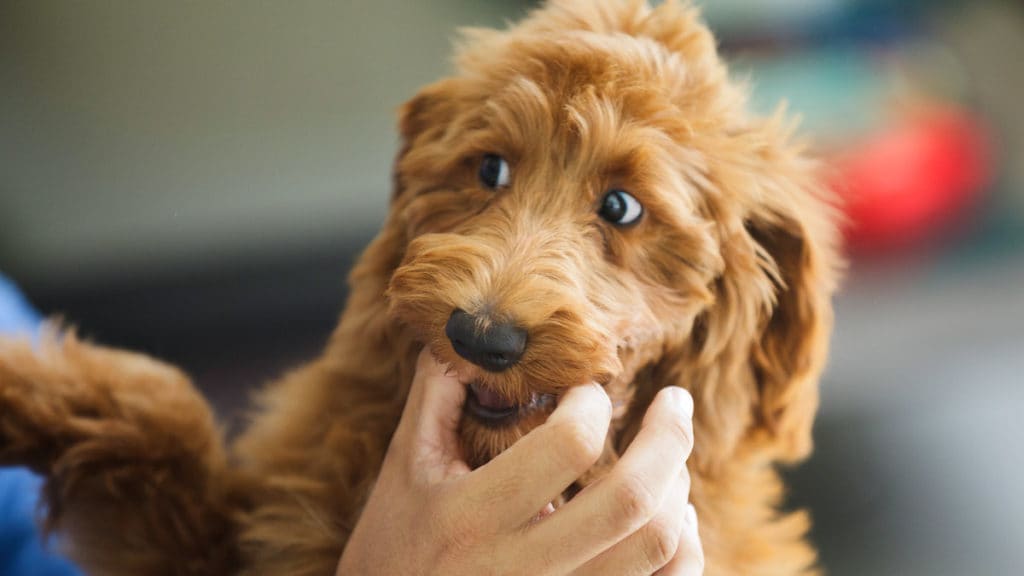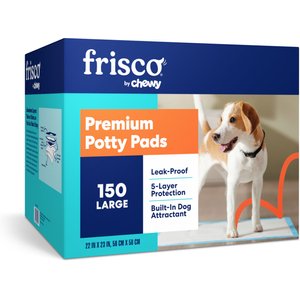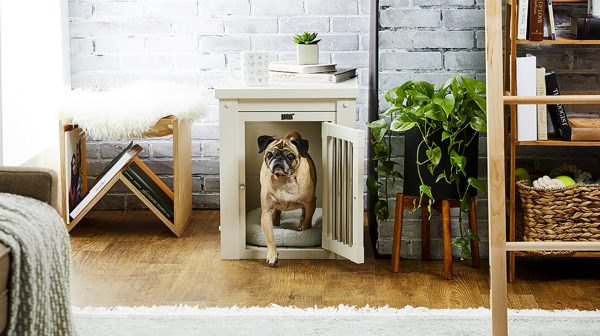Having a new dog join your household is always exciting. Whether you have a high-energy puppy clumsily running around your home or an adopted adult being welcomed to your pack, getting to know a new dog is always an adventure. With pups and older dogs alike, some bad dog behaviors occasionally appear. Luckily, Anthony Newman, CPDT-KA and founder of Calm Energy Dog Training NYC, shared a few lesser known tips and tricks to curb your dog problems, and we’re sharing them with you!
Not so-good dog behavior #1: Accidents and marking. According to Newman, there are the three main reasons for a dog going potty in your home (aside from health issues or old age): housebreaking, which is the most common; dominant marking; and separation anxiety. Most people start puppy potty training with a crate because dogs don’t want to go where they live; however, Newman reminds us that if you ever want to leave your dog at home alone uncrated, you should condition him to feel that your entire home is his living space. Using a modular doggie play pen or dog gates, closing doors, or blocking off spaces with furniture, as opposed to using a dog crate, will allow you to confine your dog to a small space to make his own. As he grows and makes the area his own, you can gradually expand it little by little until it coincides with your entire home.
Training your pup to go outside when he needs to go to the bathroom can be a tedious process, but staying patient and consistent is key in achieving results. Newman suggests avoiding dog potty pads when possible, as they can send a conflicting message to dogs by allowing them to go potty inside while you’re trying to encourage them to only go outside. However, for a young pup that hasn’t learned to hold it yet, potty pads offer a good alternative to going on your carpet or hardwood floors and can be a great tool for housebreaking.
The most important thing to remember when dealing with an unwanted dog behavior is to be patient. Getting your dog outside every few hours and praising him when he goes outside will reinforce good behavior and create lasting results.
Not so-good dog behavior #2: Anxiety while training. Just like people, some dogs are more anxious and nervous than others, especially those that were adopted and came from tough situations. Dog training an anxious pup must be approached differently than a disobedient dog because he isn’t being a bad dog on purpose—his instincts just lead him to feel nervous or scared, causing him to react. The correction for these dog problems is rooted in training a dog to trust you over his impulses.
Newman suggests the following three dog training tips to correct anxious dog behavior:
1. Don’t use a harness (unless medically required). A harness puts your dog in control, and a dog with fear or anxiety issues needs a confident leader to follow.
2. Don’t avoid trigger situations. When your anxious dog gets triggered by noisy construction or loud noises while on a walk, he does all that he can to avoid and escape the situation. By giving in to him and crossing to the other side of the street, you are validating his fear and showing him that the best solution is to avoid the perceived threatening situation. Instead, Newman encourages taking a confident stance and “lead[ing] by example [by being] the happy, confident social creature you want your dog to blossom into.”
3. Practice the “lie down” command with your pup showing his tummy. By asking a dog who’s exhibiting anxious dog behavior to “sit” in a trigger situation, you are allowing him to remain vigilant and in control of his surroundings. Asking him to lie down all the way on his side puts him in the most vulnerable position for a dog. By repeatedly asking him to become submissive on command in a stressful situation rather than being on guard, he will learn that his perceived threats aren’t going to harm him, and he will start to turn to you for guidance when he is anxious. Start by teaching your dog to lie on his side in a relaxed situation, like at home, and increase the difficulty by introducing the command in more stressful scenarios. Remember to reward your pup once you give him the “okay!” release command.
Though correcting dog problems with dog training is the best way to help nervous pups, the Sentry HC Good Behavior Pheromone Dog Calming Collar is a great aid, especially in highly stressful, temporary situations such as travel, storms, the introduction of new pets or family members, vet visits or a short stay at a home away from home. The pheromone technology mimics a mother dog calming her pups and helps alleviate stress-related behavior such as inappropriate marking, excessive barking and chewing.
Not so-good dog behavior #3: Chewing on unapproved items. Chewing is a natural dog behavior that, when not given an appropriate outlet for, will result in bad dog problems. Newman recommends natural bully sticks or rawhides to serve as a long-term reward for your dog. These treats help keep him busy while you are cooking, working or entertaining guests. “Artificial substitutes won’t satisfy most dogs’ chewing urges,” says Newman, “Rawhides and their kin are only fiber, protein and calcium, and if practiced intelligently, can not only prevent dangerous situations, but also can be used as long rewards.”
If your pup’s chewing still won’t stop, discourage him from chewing things he shouldn’t with Grannick’s Bitter Apple Original Dog Spray. Be sure to offer him a quick alternative similar to the item he wanted to chew on to show him that there are better (and tastier!) alternatives.
Not so-good dog behavior #4: Barking. Though dog training won’t completely stop dog barking, it can certainly help if this dog behavior becomes excessive or inappropriate. Newman says that there are two reasons for a dog barking: “alert” barking at noises in the hall, the doorbell or other perceived threats; or separation anxiety. Though an alert bark can usually be redirected to a calm alternative, such as a dog bed, and rewarded with a belly rub or treat, dog barking from separation anxiety requires a different approach.
Separation anxiety is often difficult to correct because the dog behavior ceases once your pup is reunited with you. Getting your dog outside on long walks multiple times a day or allowing him to run, play and socialize off-leash at a dog park will give him the opportunity to fulfill his need for mental, physical and social release.
Not so-good dog behavior #5: Jumping. Dog training for unwarranted dog behaviors, such as jumping up on people or furniture, chasing people or other animals, and stealing food or toys, is best done through correction. Puppies naturally understand their mothers’ audio, visual and physical cues that outline boundaries through yelps and gentle nips. By imitating these corrections, dogs receive clear limits. By recreating natural dog behavior that pups already learn from their moms, bad dog problems can be resolved.
Not so-good dog behavior #6: Biting. Biting, also known as mouthing, is very common in puppies, but can also stay with an older dog if not corrected when they are younger. “Teething causes chewing,” explains Newman. “Mouthing is designed to engage you in interactive play.”
A common technique in figuring out how to stop a dog from biting is ignoring negative puppy behavior. However, when it doesn’t work, you end up rewarding your pup with a fun game by retracting your hand or whatever your puppy is chewing on. Newman suggests snapping your hand toward the puppy the way that his mom would with her mouth if he tried playing a little too rough with her.
Yelping or squealing can help correct behavior as it mimics a hurt puppy. The Company of Animals Pet Corrector Dog Training Aid also aurally corrects your pup to deter unwanted behavior.
As soon as you correct your pup and he stops the mouthing, immediately redirect him to a more appropriate outlet that most resembles the activity he was trying to initiate. Nipping is usually an indication that your puppy is trying to engage in interactive play, so try playing fetch or tug-of-war with him.
Patience and consistency paired with proper dog training can help with any dog, young or old, with inappropriate dog barking, chewing, jumping up and stealing, and even anxiety. Whether you are trying to figure out how to stop a dog from biting or correcting a bad dog behavior, dog problems always have solutions!
Share:













